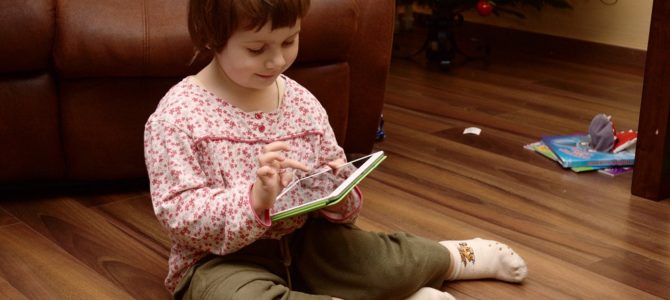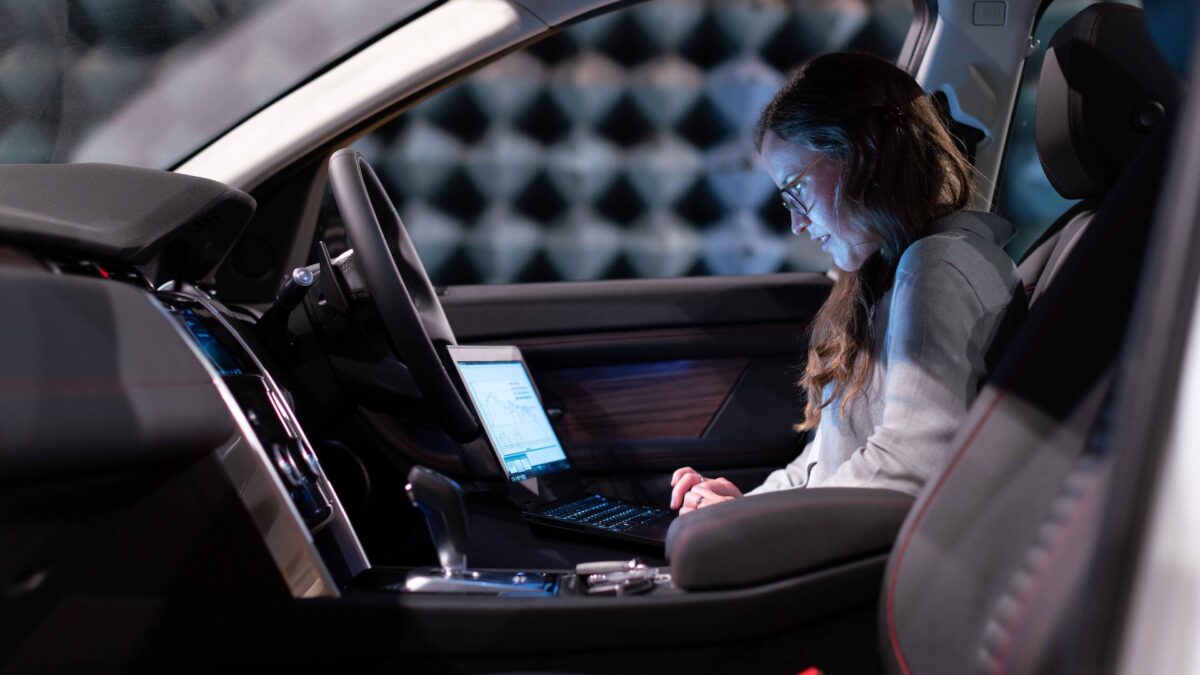
Scientists recently published images of brain scans on young children that demonstrate the effects of reading versus using screens. In the scans of children who spent more time with books than screens (less than an hour of screen time a day), there was a concentration of white matter focused in the center of the brain. For the scans of children who spent more time with screens (more than an hour a day), this white matter was scattered.
This is your child's brain on books: Scans show benefit of reading vs. screen time https://t.co/O1nod5AYOK pic.twitter.com/722gnYeWHz
— Rick King (@RickKing16) January 17, 2020
This is significant because white matter makes up the brain’s neural connections, serving as pathways for brain activity. The more concentrated the white matter, the faster thoughts and commands travel. When white matter is diffused, this activity is slowed down. As a result, brains with concentrated white matter do more work and do it faster (like a computer with a faster processor) while brains with diffused white matter operate at a lower capacity.
As one would expect, concentrated white matter invariably results in better cognitive performance in the kids who stay off screens: they focus better, learn faster, and show greater mental flexibility and creativity. While this doesn’t necessarily mean hitting milestones (like walking, talking, etc.) earlier, it does mean that the general groundwork is set for more complex tasks that young children encounter in the first years of school.
They will socialize more easily, follow directions more closely, and acquire basic academic skills like reading, computation, and memorization faster and with greater depth. By contrast, their screen-addled peers will struggle with all these tasks, act out and misbehave, and often require early intervention and medication.
Taken even further, this difference can become more pronounced over time. As writer Malcolm Gladwell demonstrates in his prominent book “Outliers,” young children who show great promise early in life are more likely to have more opportunities for practice and instruction over the course of their lives than those who show less promise.
Just like bigger five-year-olds with better coordination are picked up for competitive early youth hockey leagues (Gladwell’s example), kindergarteners who behave better and think faster will be taken into gifted and talented programs, which puts them on track for advanced classes later in their academic career. Although motivated children can overcome this setback and join these programs later in life, they will have to compensate for their early disadvantage with more grit and discipline—the work won’t feel “natural” for them.
You Can’t Argue With Pictures
As with any new report or group that cautions against excessive screen usage, which includes the American Pediatric Association, some parents and educators may shrug this off and maintain that it’s nothing serious. After all, they contend, a student may do worse at school for a variety of reasons (bad genes, unstable home, brain works differently, etc.), not necessarily because they have watched YouTube Kids for four hours a day every day for three years before entering school. Besides, many parents use their phones obsessively and they feel fine.
So what makes these pictures of children’s brains any different from the usual studies, psychologists, or Luddite curmudgeons criticizing screens? Because they are pictures, not logical conclusions developed through argumentation and inference. They provide physical evidence of what screens do to developing brains. More importantly, they illustrate how this happens. What was once correlation (y follows x, so a connection maybe exists) now rises to the level of causation (y is the result of x, so a connection certainly exists). Parents can no longer logically excuse outsourcing of childcare to a screen when they can see what happens because of it.
A similar situation arises in debates over abortion. Pro-life advocates try to prove the personhood of an unborn child in a variety of ways, but pro-choice advocates stubbornly deny personhood and insist on using euphemisms (embryo, fetus, product of conception, clump of cells, etc.). To break through the cloud of words and abstractions, a pro-lifer can show an ultrasound of a baby in the womb, which consequently makes the argument against personhood much more difficult. For this reason, pro-life groups and pro-life politicians push for laws requiring doctors to perform ultrasounds on mothers seeking abortion.
Casts Doubt on Trendy Screen-Based Schooling
With that said, a picture can only go so far in dissuading parents from what has become habit. As abortion does in a far more extreme manner, many parents will continue trading off their children’s wellbeing for personal convenience. Nevertheless, a picture will at least provide much-needed clarity on this tradeoff.
A picture also casts doubt the claims of educators who insist on pushing technology in the classroom and putting screens in children’s hands. Regardless of what the kids do with these devices, prolonged exposure to screens inevitably does harm and is no substitute for real-life learning. And this is not just coming from unconventional reform-minded pedagogues questioning the status quo; this is coming from scientists scanning kids’ brains.
Adults give their kids screens because it’s easy and parents need a break. Reading to kids (and staying off screens themselves) is tedious, and the benefits were not, until now, immediately visible. Going screen-free seems needlessly high-maintenance—and, after using a screen for so many years, it can be scary.
But the alternative is worse, not only because of what is does to a developing brain but what it does to relationships. What Marie Winn said almost half a century ago about television and its disastrous impact on family life, turning a loving home into just a shared space with little shared love or experiences, is all the truer today with tablets and smartphones.
Parents who want to avoid this fate for their families need to trust the science, put away the electronic pacifiers, and bond with their children over a good book. They know better now.









